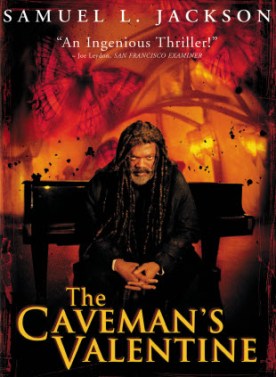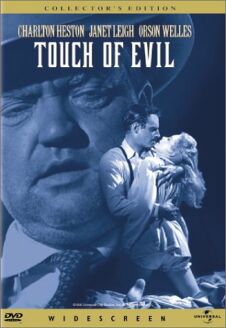Caveman’s Valentine, The
Anyone who has ever had anything to do with schizophrenia will tell you that there is nothing attractive or heroic or artistic about it, but the romantic myth that there is dies hard. The talented Samuel L. Jackson is the latest star prepared to take on the role of holy madman in The Caveman’s Valentine, an exercise in absurdity by Kasi Lemmons that is, for all that, not much more absurd than most Hollywood movies these days. Jackson plays Romulus Ledbetter, a homeless person living in a cave in Central Park who somehow, in spite of his derangement, manages to track down a murderer and redeem himself in the eyes of his daughter, Lulu (Aunjanue Ellis), a New York City cop.
Romulus is not just a fine amateur detective, he is also a brilliant pianist and composer, a graduate of the Juilliard school, whose gifts are not only undiminished by his illness but are perhaps even enhanced by it. The suffering artist myth so beloved of Hollywood lurks in the background here too. When the body of another street person is found in a tree near his cave, Romulus refuses to believe that the young man has died of exposure and begins a search for his murderer which leads him to a rich and famous artist and photographer called David Leppenraub (Colm Feore) and his sister, a beautiful red-head called Moira (Ann Magnuson) who has Romulus—crazy and street-soiled (or cave-soiled) as he is, and after only the briefest of clean-ups—into her bed in no time at all.
But in a way the real meat of the movie is in the interaction between Crazy Romulus and a bankruptcy lawyer called Bob (Anthony Michael Hall) who takes him in and gives him a suit to wear and invites him to a party with a lot of rich white people who want to hear him play the piano. Of course Romulus tells them off for being rich white people and not (normally) wanting to associate with people like him, which naturally makes the liberal guilt break out all over them like goose-bumps. Their behavior must be taken together with the decadence and violence of the even more rich and liberal set surrounding Leppenraub as an indication that what Ms Lemmon’s picture is really for is a validation of the black view of white élites, and what goes on among them out of the view of curious black folks.
For the movie’s subtext is—as it almost has to be, I think, where the subject is a black schizophrenic whose craziness is in some sense vindicated—a justification of what has lately become the black paranoid style of politics. Was AIDS invented by scientists working for the federal government to destroy black people? Was crack cocaine brought into the country as a deliberate policy of the CIA to wreck black communities? Were voting officials in Florida and elsewhere last November systematically excluding black people from polling places? Is the reputation for sleaziness now more firmly than ever attaching itself to Bill Clinton nothing but evidence that he is “our first black president” ? If you believe any or all of these charges, or any of a large number of other, similar ones, you will find many even among otherwise responsible members of the black community to second your opinion.
You can understand how such a disposition to disbelieve everything you are told by official sources might have arisen in a community which has been lied to and mistreated through most of its history in this country, but that does not make it any more wise or healthy for the descendants of slaves to remain committed to a false belief in a conspiracy to kill or re-enslave them. It is, in fact, a form of madness, which is what inevitably makes the fictional depiction of an acknowledged black paranoiac politically resonant. Though Romulus believes that someone called Cornelius Gould Stuyvesant is beaming thought-control waves at him from the top of the Chrysler Building and Ms Lemmons does not, still she is prepared to give him partial credit for being right because, being black, he’s got to be a victim of somebody’s conspiracy.
In other words, even though some of the specifics may be wrong, paranoia can also be a way to the truth. In a way, Ms Lemmons’s film represents an advance on the typical redaction of black paranoia in that (and here, as I often do, I give away more of the ending than I would do if I thought that most of my readers would ever see what I regard as a film not worth seeing; for those who will, you may stop reading now) it is revealed in the end that the powerful white guy who is the natural suspect in the death of Romulus’s friend did not kill him after all, though the guilty party is a part of the same set of kinky white folks centered on Leppenraub. But the larger point is made by showing Romulus to be a schizophrenic who turns out to be shrewder than the sane people. You can believe that if you want to, but it is itself a form of self-destructive madness to do so.
Discover more from James Bowman
Subscribe to get the latest posts to your email.





